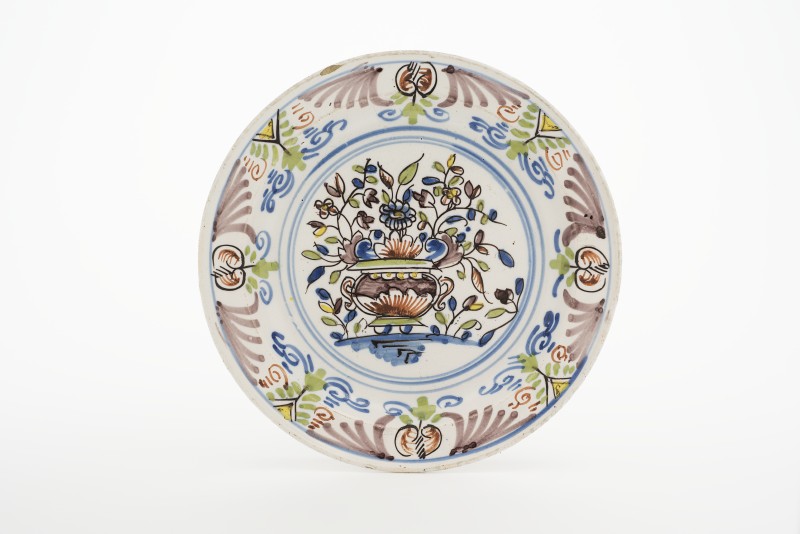Teller mit geradem Spiegel, steilem Anstieg, schräg ansteigender Fahne und hochgebogenem Lippenrand.
Im Spiegel Darstellung einer Volutenhenkelvase mit Blumenarrangement. Um den Spiegel drei blaue Kreislinien. Auf Anstieg und Fahne Behangmuster aus gefüllten Kreissegmenten, stilisierten Palmetten, Dreiecken und Voluten.
Glasur mit nadelstichartigen Löchern. Bestoßungen an der Lippe, Glasurabrieb an der Fahne.
Marke in Inglasurblau auf dem Boden: „G.“
Ankauf von Gertrud Freifrau von Nordeck, Döbbelin bei Stendal, 1922
en

